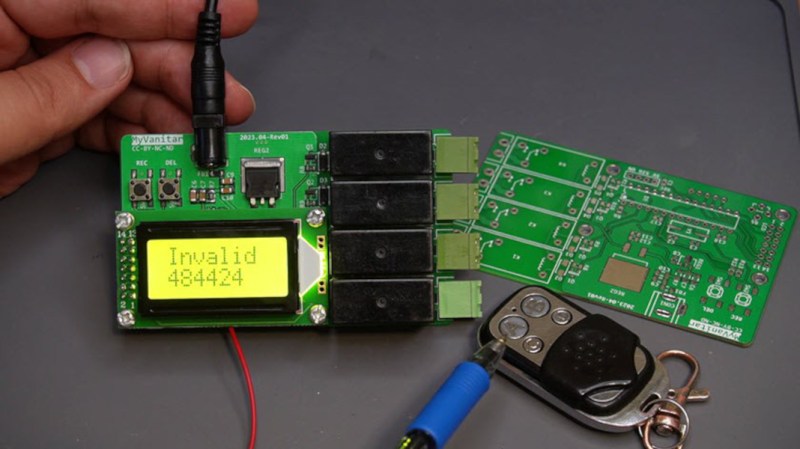RF Remote Made Easy

The 433 MHz spectrum is a little bit of an oddball. It’s one of the few areas of the radio spectrum which is nearly universally unlicensed, meaning as long as …read more Continue reading RF Remote Made Easy
Collaborate Disseminate

The 433 MHz spectrum is a little bit of an oddball. It’s one of the few areas of the radio spectrum which is nearly universally unlicensed, meaning as long as …read more Continue reading RF Remote Made Easy

Often with more “modern” complex protocols involving handshaking, token exchanges, and all the other hoops and whistles accompanying them, we forget how useful and powerful serial can be. In what …read more Continue reading A Simple Serial Display
Historically gaming consoles are sold at little-to-no profit in order to entice customers with a low up-front price. The real profits roll in afterwards from sales of games and accessories. Seeking a slice of the latter, aftermarket accessory makers jump in with reverse-engineered compatible products at varying levels of “compatible”. …read more
Continue reading The Not Quite USB-C Of Nintendo Switch Accessories
Everything’s internet connected these days, garage doors, baby monitors, and the kitchen sink are all hooked up. There are benefits to having everything online, but also several pitfalls. Maintaining security on a home network is an ongoing job, made more difficult by the number of devices that must be kept …read more
With the high availability of low-cost modular electronic components, building your own little robot buddy is easier and more affordable than ever. But while the electronics might be dirt cheap thanks to the economies of scale, modular robot chassis can be surprisingly expensive. If you’ve got a 3D printer you can always make a chassis that way, but what if you’re looking for something a bit more artisanal?
For his entry into the Circuit Sculpture Contest, [Robson Couto] has built a simple robot which dumps the traditional chassis for a frame made out of bent and soldered copper wire. Not …read more
The idea of winding inductive guitar pickups by hand is almost unthinkable. It uses extremely thin wire and is a repetitive, laborious process that nevertheless requires a certain amount of precision. It’s a prime candidate for automation, and while [Davide Gironi] did exactly that, he wasn’t entirely satisfied with his earlier version. He now has a new CNC version that is more full-featured and uses an ATMega8 microcontroller.
[Davide Gironi]’s previous version took care of winding and counting the number of turns, but it was still an assisted manual system that relied on a human operator. The new upgrade includes …read more
![]() Continue reading CNC Upgrade to Guitar Pickup Winding Machine
Continue reading CNC Upgrade to Guitar Pickup Winding Machine